Blog -> Articles |
Colorado Beer Culture : a belgian point of view
I decided to bypass a long time resistance of mine to experience a sample of what the United States have to offer.
I came back with a few notes about american craft beer culture that I wanted to share. Feel free to comment, share, subscribe.
Disclaimer: I will struggle as strong as possible against them, but stereotypes will always prevail.
This article was originally written in June 2015.
What would a Belgian think of Colorado (1) craft beer scene, beers, main actors? Isn’t Belgium the beer-country by excellence, the quintessence of what’s brewed and alcoholic, the very nest of drinkable culture?
Why would I come across the Pacific Ocean, while – according to apparently the whole world – we have everything we need here?
Maybe I should start there.
During my years working as a waiter, then as a guide and tasting animator, I came to meet more and more people from other countries, and of course cultures.
It appeared that, following the stereotype, those people came to (or just consider) Belgium (mainly) because of beer, and often offered some bottles and cans from their own breweries.
Imagine the effect of trying a beer coming from another country for the very first time. A proper slap in the face: good is not necessarily Belgian. I was in my mid-twenties, an Italian craft.
When I finally sat down to work on this article, I began by brainstorming. So, this is what I thought of:
Colorado specs – Vivid – Actively curious people (producers, resellers, customers)
– Half our population
– Crafts in restaurants
– Active guild presence – Creative (new recipes, never-seen blends and ideas) – As many breweries as in Belgium
– Very active tasting & consumption spots – Craft everywhere; plenty of beer bars – The Guild figures something shapeless but bigger as craft movement.
Wow.
That’s some list we have here. First, let’s compare some figures as a rough context.
A frame.

Figures ‘n’ stuff (2015)
Colorado
Production size ±23’300’000 barrels (27’425’308 hL) ,
(roughly 1/5 is craft) Producers (breweries & blenders) ± 300
Inhabitants ± 5’400’000 (4)
Belgium
Production size ±18’751’008 hL (15’725’372 barrels) (2, 3)
Producers (breweries & blenders) ± 300
Inhabitants ± 11’200’000 (5)
US
Production size 196M barrels (6) (± 233M hL)
Breweries ± 3400 (8)
Inhabitants 318.9M
EU
Production size 380M hL (7) (± 318M barrels)
Breweries ± 5665 (9)
Inhabitants 742.5M
So.
More breweries per capita in Colorado than Belgium; more quantity of beer produced in CO than in BE.
Let’s try not to pull any hasty conclusions; observations will be good enough for now.
Back to the story
Coming to the States was one of those ideas/projects I had in some corner of my head, and when I finally made the decision to do it I was quite excited.
I was expecting to encounter some cultural differences, and even some surprises, and instead of letting those disappear in the limbos of my bad memory, I decided to write down – and to share – some observations.
“In psychology faculty, you always have the hottest girls!” I heard this kind of considerations so many times during my studies I came to wonder.
Was this true?
Partly: with (if I remember well) around 87% of girls, no doubt you’ll have a bigger probability of finding the right fit.
The link with our field here is the following: the wider the choice, the more likely you’ll be able to find something relatively of good quality.
Mutatis mutandis, craft doesn’t necessarily mean good.
At some point, the Gauss’ bell distribution applies (quality wise), regardless the amount of breweries considered: just a bunch of amazingly good breweries, plenty of average (to good, less good and not so good) ones, just a bunch of “could be way better” breweries.
The greater freedom of entrepreneurship helps the beer industry a lot: two or three pans, a few empty bottles, ingredients, “I swear upon the honor I’m a brewer” in front of some official entity and bim! A new brewery is born.
There are market-laws there I’m pretty sure, as what’s happening on the craft-beer market is quite predictable: the amount of producers is increasing (crazy); at some point a top will be reached, then this amount will decrease.
To eventually increase again. I figure it going by wave cycles.
I visited more than 25 different breweries (10). Yeah, life’s hard.
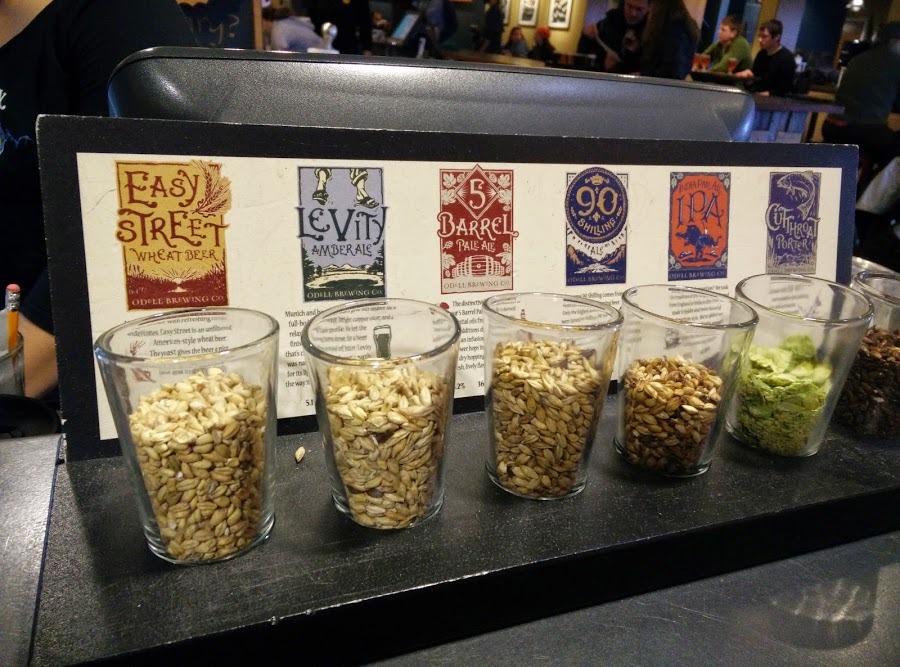
With the different figures I left above, no doubt it was a pretty good idea to land in Colorado to start my journey into craft America.
This impression strongly reinforced by the easy reach of a craft product on tap. We in Belgium don’t have anything like that in comparison.
I decided to regroup what I noticed into big categories: Culture, and Bar/taprooms. Let’s begin with them. I’ll talk of the bare necessity of having a taproom for a brewery, glassware, but first things first: the welcome quality.
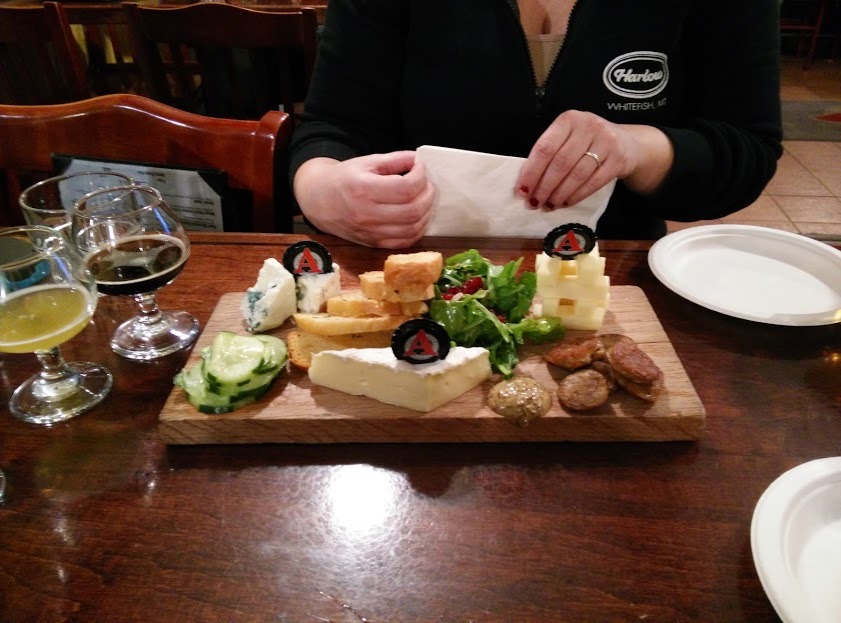
BAR / TAPROOMS / SERVICE
Welcome quality: something that stroke me almost instantly is the way we are welcomed, as customers, in selling points, especially in bars.
I’m not used to be so smoothly taken care of by waiters and waitresses back home, not even in places I go to for years.
Of course, they’re mostly paid on tips.
Of course, it feels a bit excessive sometimes (and how can you make a difference when every bar and shop does the same?), but still.
I will always remember that time when, for some reason, I entered a cellular company: at once the whole crew stopped what they were doing, stared at me and welcomed me altogether saying joyfully “Welcome to …!”.
I remained voiceless for three real seconds.
Considering that matter, having to tip waiters is quite uneasy when you come from continental Europe.
So the price you see on the menu isn’t correct (add at the very least 10%+ to your bill) is one point; another one: how can you make the waiter understand you actually really enjoyed the service? I really get it when it’s a small business (paying the smallest wage lightens the personnel budget), but when we’re talking of a 50’000+ barrels annual production brewery?

That is a logical move, but a treat nevertheless.
For both parts: by law in CO it is allowed for a brewery to sell their own production on-site (and if you apply the same prices than on the market, you make a substantial increase of your margins); and is there any better way to spend a Sunday than in a craft brewery?
Founding and opening a brewery can look like a lifetime dream, and those who succeed in this never regret the adventure.
It comes though with a substantial investment.
Like, a real big huge colossal investment (time, money, availability, family life, aso).
There’s one thing I learnt quite the hard way: beer is a very jealous lover.
It doesn’t like to share.
According to the market, it is natural to have a place where customers (Mr. and Ms. Anybody and kids, curious people, beer travellers, long bearded geeks and alike) can gather, spend some time and taste the local production.
Warmth, colorfulness, space, decoration creativity, available personnel, crowd, big tables and exclusivities, those are to me the major common points between those I visited.
This is quite appealing indeed. Something else: even when the brewery wasn’t working, the taprooms were open anyway, like bars.
It seems common to have those open seven days a week. Try to do that in Belgium.
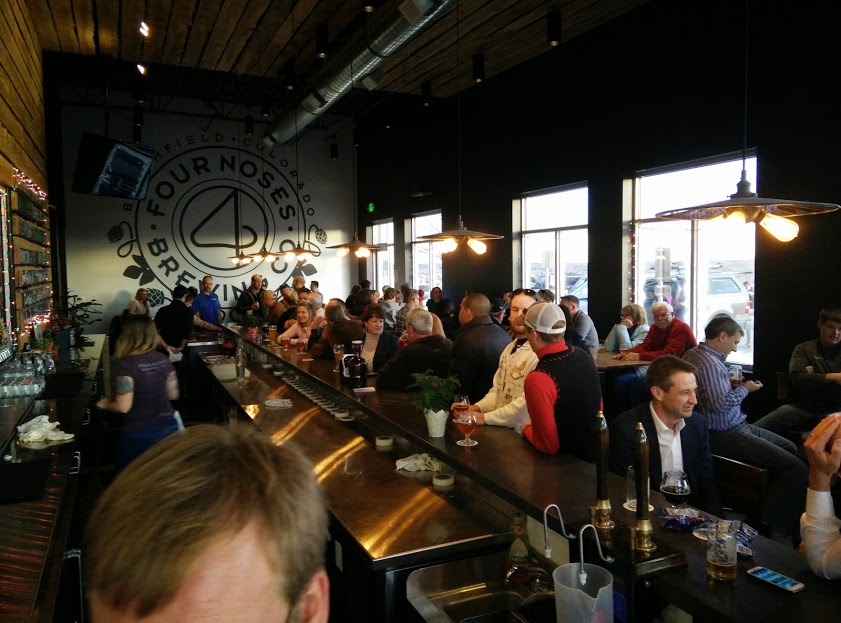
- Huge investment, I said.
It’s quite the same for the taproom, and what is the point of having the best bar without any customer in it?Attracting them is one thing, keeping them longer is another one.
So that’s why (at least that’s how I understood it) most of those I visited require the services of one or several food-trucks.Here fresh tacos, there craft burgers, sometimes fries, or maybe a generous slice of crazy pizza to pair with your beer?
What a great idea: those businesses take advantage of the presence of each other without being malicious.Like mitochondria for the cell.
Shared investments, shared profits, benefits to all. - Something quite funny, especially for a former very-picky-on-the-glass waiter: it seemed to me very easy to find beer poured in jam-pots instead of a proper beer glass.
That gives a daring impression of bold freshness, absolutely needed in this dusty and sometimes traditional-to-the-absurd industry. I liked it.
CULTURE
So having a taproom is nice but worthless if there is no customer in it, right?
This is another big merit, what makes this beer culture so vivid, this “I-don’t-know-it-so-let’s-try” attitude towards the beer market. No “Belgian paradox” (11) here: what remains to learn when you’re told your whole entire life you’re the best in something?
Well take it first to a child education context (spoilt child), then directly jump to the country level, with Belgium (12).
In Belgium, even tourists don’t do that.
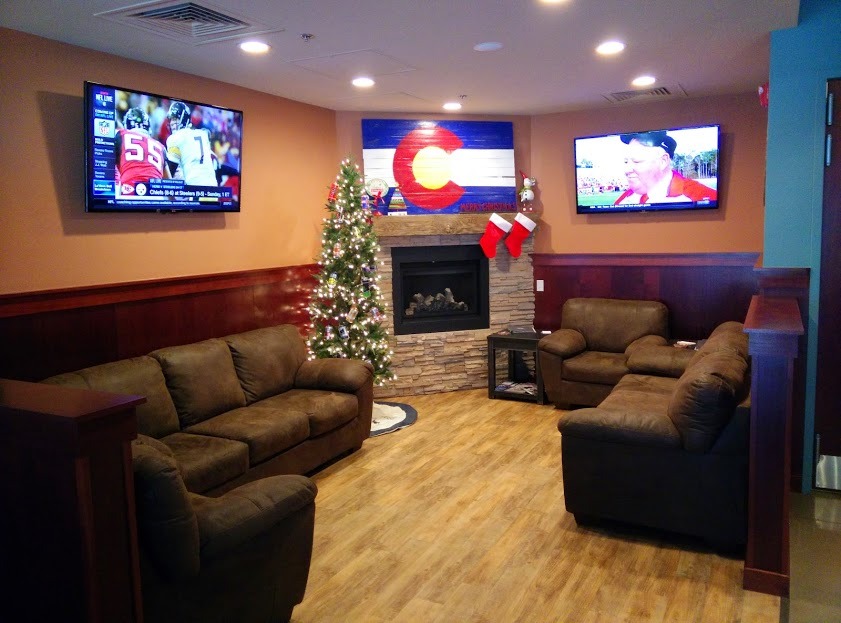
- I asked the head jurist of the Guild what makes a Colorado beer recognizable.
He wasn’t capable of answering the question. For the better: indeed there is a big – huge – variety of beers, taste objectives, recipes, purposes, spices used and so on.
That is the same on the whole continent I believe: the United States mothered very distinctive² beers like Rogue’s Sriracha Stout, Crooked Stave’s Nightmare on Brett, Ballast Point’s Indra Kunindra, Epic’s Big Bad Baptist, and so on. So this side of production is highly exciting to observe (and to taste as well).
There is another one.
What one could call “the first of the class” syndrome.
That’s for the next point. - The super-stimulus. No matter the brewery we’d consider here, or the level of creativity involved, there’s almost systematically in the selection proposed an IPA, an American brown ale, a Belgian ale, a saison, a wheat beer, a dIPA and a tripel.
Of course, it’s always nice (or should be) to taste one brewery’s variation on the same theme, but sometimes it seems it’s the opposite objective that’s followed: how can I make my beer taste the closest to what’s considered to be the quintessence of its category? An example? The Belgian ales.
How strange: a beer named after a country. What does that mean?
Has Belgium a special taste I wasn’t aware of?
Does our country systematically inspire that bubble-gummy smell?
That made me think of this discipline you have to study in psychology: ethology.
This was quite interesting indeed to know what you can learn by just observing animals.
One concept particularly kept my attention: the super-stimulus.
Let me explain: some scientists wondered by what male seagull subspecies were turned on.
So after a few trials they discovered that it was the shape of the beak and the size of some red spot on it.
At some point they discovered that showing an artificial visual pattern would do the job.
They also discovered that, by increasing some properties of those details the seagulls were more attracted by the artificial visual pattern than the natural genuine one.
What the hell does it make to talk of that here? Well it seems that we can find both tendencies in some brewery’s palette: intense creativity on one hand, “über-fitting-the-style” kind of orientation on the other.
It’s almost schizophrenic, having those incompatible attitudes. In order to remember this point, I wrote in my draft “The love of the style will be the death of you”. Indeed: enclosing creativity forces to diminish creation freedom. This is imputable to both sides: consumers and producers. Hopefully you can find some out-of-the-box initiatives. - Not everything’s candy-pink in that frame, though.
Being ID-ed was one of the weirdest parts of my American beer experience overseas.In my whole staying, I was systematically ID-ed, to almost the ridiculous (13). The wrinkles on my face invite to consider I’m most of the time older than the waiter, and my facial hair strongly suggests that I time-travelled from the early twenties. That, and not being allowed to drink on the street are two details that made me wonder. A lot. That’s not to criticize, but I won’t say nothing either just because “that’s the way it is” in another culture.
- The famous six-pack! That’s something we don’t have here, and that seems to be almost a reflex overseas. A signature. Not four, not eight: six. And of course you can find craft and macros in six-packs. Here, only the big guys.
- Foam. How funny it is to observe the strength of culture here: depending on the side of the Pacific Ocean, the amount of foam that is acceptable/needed will dramatically differ.In short, we have opposite positions: “would you please put some beer in my foam, dude?” and “can’t you pour my beer correctly (foam needed here!!), dude?”
- Foam-bis: you often have the choice between a beer poured on CO2 or Nitro. And that is great. It sometimes changes dramatically the experience we can have of a beer. To me it is like a quality trial: if it goes fine on nitro, the beer is of good quality. Besides a famous so-called stout from Saint-James Gate, it is impossible to find a beer on nitrogen in Belgium.

- We love, as beings using language, to categorize our knowledge. It’s needed: it would otherwise be chaos in our thoughts and perceptions. To me considerations about filtration and bottle-conditioning were pretty easy and straight-forward: craft = unfiltered and bottle-conditioned. If those conditions weren’t met then not craft. Easy cheesy. I remember now this conversation about force-carbonation with one of our brewers here, and there was absolutely no problem for him to do so and still consider the beer worth the try. No matter the respect I had (and still have) for the guy, I was a bit suspicious about that. He was discussing one of my strongest equations about beer (only based on stereotypes), so I didn’t know how to take it. Then, visiting the breweries mentioned above helped me not only reconsider the equation, but opening the question, by making it more difficult to handle. Craft can be filtered and force-carbonated and still be of high quality. Thank you Colorado for this lesson of humility.
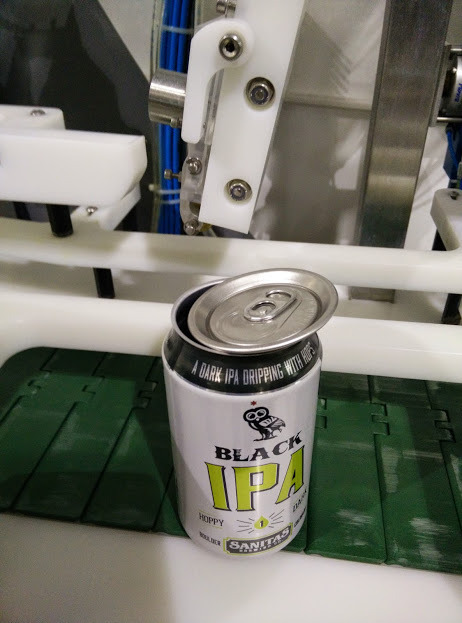
- Following, canning a craft beer? What for? So this might be related to the nobleness crisis of beer, in front of wine: glass is classy, it procures this premium feeling. So what is classy, of high quality, has necessarily to be bottled. This is even more obvious in Belgium: the only canned beers are the industrial ones (for plenty of reasons). But canning has plenty of advantages, when you get over what we here can consider the “cheap feeling”. It cools down faster, it’s cheaper to produce and to recycle, it protects way more efficiently from UVBs, it’s way lighter, and so on.
- Availability. By having liquorstores all around the place, because beer (and other alcoholic drinks) aren’t only sold in supermarkets (and by so not ruled only by big companies which would bump out the smaller ones (14)), that implies that you are more likely to have the possibility to receive some pieces of advice from capable people (if you’re not sure, just ask an advice of a beer you know). This Three-tier system is not exclusively bad, by creating that. Here, almost exclusively industrial beers are to be found in supermarkets, while beer-shops exist, but if they’re interesting (that’s to say no tourist traps, with nice-enough advice capabilities), they’re rare.
- So, liquorstores. But not only: what keeps cold-showering me is the fact it’s quite difficult to find restaurants that would consider the eventuality of having, not necessarily a geeky beer selection, but at least a decent one. In Belgium; I had another experience in CO. That is pleasant to discover it’s nothing exceptional to not having to choose between wine or water in a restaurant because the only beers they’d have are coming from macros. It is shyly emerging here.

- Having to recalculate prices because taxes are often not included in the displayed price is a pain in the pants, to say it politely. I asked many people the reason of such separation, and yet I didn’t receive any proper answer.
- Ultimately what we consider “craft” depends on the cultural frame (of the observer, of the country, of the period, of the criteria used, and so on (15)). In order to qualify a brewery of craft, one has to think of several factors, including the production size, and the ownership distribution (less than one third may belong to a big company). While I don’t worry about the big guys in that matter, how can the craft movement be heard or defended, legally speaking? The Davids need something to represent them against industrial and government Goliaths. The Colorado Brewers’ Guild is born out of such a need, back in 1995, as the beer industry is regulated by the Congress.Its goals are to promote and communicate about the Colorado craft movement as an association, to defend the craft brewers’ interests as a lobby, to give access to knowledge and education as an official representation entity.To summarize the way it works, its words could be “for the greater good”. Together, they’re stronger. This is systemically correct, and leads to the next point. But first, let’s say this: we in Belgium don’t have such an official entity to represent the craft brewers or the customers (like the CamRA in England for example). There are plenty of arguments between brewers, breweries, breweries and bars, and while it is indeed possible to find some producers’ associations (like HORAL for spontaneous fermentation beers), they’re often infiltrated by disputable-work-ethics breweries.

- Systemics. The geographical distribution of the breweries I visited was curious to me: you can find some concentrated clusters of breweries near of each other, and some other areas completely “empty”. Were they bothered by each other’s presence? Of course not. Instead, most – if not all of the – breweries I asked for advice about the next place I’d visit spontaneously gave me tips of other breweries. What they understood (at least showed, at least unconsciously) is that they mostly share the same prospect. What is profitable directly for them is the same for others. “If he succeeds, I’ll succeed”, and the other way around.
- The previous point reveals another one, more fundamental: the big enemy isn’t the macro-companies, as they sometimes like to call themselves. Indeed a craft brewery takes a significant part of its value thanks to the mainstream tasteless brews but, what really brings people to the craft side of beer? Education.And curiosity. In other terms, the big beast of the forest isn’t the mountain that shows the good color when ice cold, but ignorance is, miseducation. Indeed, sometimes the only information customers receive is from the industrial brewers only. On the other hand, educated people have a wider spectrum of choices, they’d more likely to take educated decisions.
Overall
So my first experience of America in situ was, it’s quite clear now, massively positive. Is Colorado The beer state? I don’t even get the point of answering that question. However, the little window I opened on this market was very pleasant: I met wonderful passionate interesting knowledgeable people. And just for that I’m very grateful to have had the opportunity to make it overseas.Is it needless to say I had my mind blown several times by the complete surprising experiences beer-wise? Tell me where for example I can find cucumber beers, cream ales, or 100% spontaneously fermented imperial stouts with wild yeast in Belgium? So please, I suggest to reconsider the value of the beers tried.Not based on their country of origin, but on their quality. nd many of our brewers have a lot to learn from this creativity.
To me, even if we know the market won’t expand the way it does in the United States for a decade or two, it still has some bright golden years to come.
Beer_Padaw0ne. (Yes because back then I thought it was a cool nickname).
Footnotes:
(1): Let’s use, from now on, ‘CO’ for Colorado and ‘BE’ for Belgium. (2): In 2007, according to www.cobeer.com/beerbook.pdf, p. 12. (3): A barrel is 1.19240471 hL equivalent ; a hL is 0.83864144 barrel equivalent. (4): In 2013, according to Wikipedia. (5): In 2013, according to Google. (6): In 2012, according to www.wikipedia.org/wiki/Beer_in_the_United_States. (7): In 2011, according to MALOSSE, H. (president of social and economical european comity), 2013. “Promouvoir le potentiel de croissance de l’industrie européenne de la bière”. (8): Unofficial figure. That’s a rough projection of the amount of breweries end 2015. (9): In 2013, according to VAN DE WALLE, M. (ed.) (2014), “Beer Statistics. 2014 edition”, p. 21. I would take the figures in this document with caution though, since their way of defining a microbrewery is “a brewery with yearly production up to 1,000 hectolitres”. (10): 4 Noses, Black Shirt, Coors (not a craft, I know), Epic, Funkwerks, Great Divide, Lost Highway, New Belgium, Odell, Powder Keg, Rickoli, Sanitas, Upslope. Didn’t visit but went to taprooms of: 12°, Arvada, Avery, Big Choice, Boulder Beer, Crooked Stave, Dry Dock, Finkel & Garf, Golden City, Gravity, High Hops, Left Hand, Odd 13, Oskar Blues, Prost, Renegade, Strange, Tommyknocker, Trinity, Yak & Yeti. Not breweries, still nice spots to go to: Colorado Cider Company, Colorado Keg House, Colorado Plus, Euclid Hall, Hops & Pie, Stranahan’s distillery, Highlands Liquors & Wine. (11): Merci Jean Hummler pour l’expression, elle convient parfaitement. (12): It is, of course and hopefully, more complicated than that. We here have very passionate, skilled and talented brewers. Still. (13): Not mentioning the fact that when your document is no longer valid you are considered not allowed to drink. (14): This is very rough said like that. It is of course way more complicated than that, considering the available space in a given store versus the number of brands and breweries represented, knowing that some big breweries intentionally put new brands on the market to push others away from the shelves for example. (15): According to the Brewers Association, « An American craft brewer is small, independant and traditional ». By “small” they mean up to 6M barrels / year; by “independent” they mean up to 25% of ownership can be controlled by a big guy; by “traditional” they mean the majority of their production has still to fit to the definition of beer, not only flavored malt beverage. https://www.brewersassociation.org/statistics/craft-brewer-defined/
Webography: www.brewersassociation.org/statistics/number-of-breweries/ – http://www.brewersofeurope.org/site/media-centre/key-facts-figures.php – www.brewersofeurope.org/site/media-centre/index.php?doc_id=840&class_id=31&detail=true – https://www.brewersassociation.org/statistics/craft-brewer-defined/

0 Comments